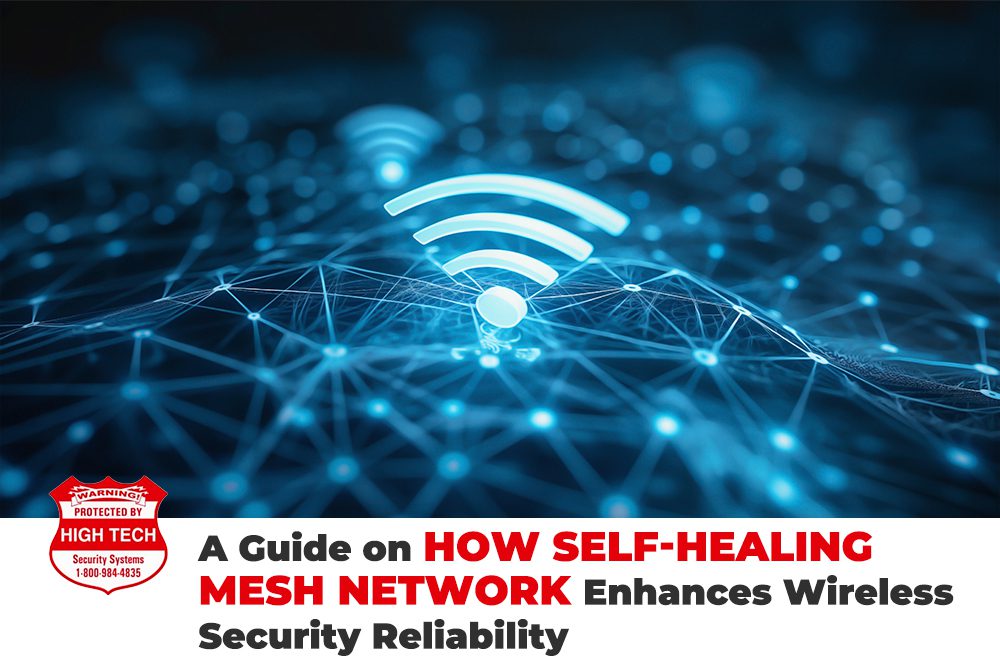Overview: Explore the benefits of self-healing mesh networks in Highland and surrounding areas. From enhanced reliability to seamless security, see how this technology keeps your wireless connections strong and secure. Learn more!
As Highland, California, and its neighboring cities like Redlands, San Bernardino, and Yucaipa continue to grow, so does the demand for reliable and secure wireless networks. Traditional network systems often falter in providing consistent coverage, especially in areas with expanding infrastructure or challenging terrains like Mentone or Crestline. This is where self-healing mesh networks step in, offering a revolutionary approach to wireless security and reliability.
In this guide, we’ll explore how self-healing mesh networks work and why they’re an ideal solution for both residential and commercial setups across Highland and the surrounding areas.
What Is a Self-Healing Mesh Network?
A self-healing mesh network is a decentralized system where every connected device, or node, communicates directly with others. Unlike traditional networks that rely on a single router, mesh networks create multiple pathways for data transmission.
The “self-healing” feature ensures that even if one node fails — whether it’s in a densely populated neighborhood in Redlands or a remote area near Lake Arrowhead — the network automatically reroutes data through other nodes, maintaining connectivity and security.
>> Related Reading: What is a Mesh Network & Why You’d Use One
Key Features That Enhance Security Reliability in Highland
Redundancy and Fault Tolerance: In regions like San Bernardino, where urban developments coexist with older infrastructures, network outages can be common. Self-healing mesh networks offer multiple redundant connections to minimize downtime, making them ideal for homes and businesses alike.
Dynamic Path Selection: Mesh networks adapt in real time to avoid congested or compromised routes. This feature is especially useful in areas like Yucaipa, where varying population densities can affect network performance. Dynamic optimization ensures faster and more secure data transmission.
Threat Containment: In the event of a security breach — whether in a bustling commercial district in Highland or a quiet residential area in Mentone — the network can isolate the affected node, preventing threats from spreading.
Scalability for Growing Communities: As areas like Redlands and Beaumont continue to expand, adding devices to a mesh network doesn’t weaken its performance. Instead, each new device strengthens the network by creating additional pathways.
Why Self-Healing Mesh Networks Are Ideal for Wireless Security in Highland
Enhanced Signal Coverage: In communities with varying topographies like Crestline and Running Springs, traditional networks often struggle with dead zones. A self-healing mesh network eliminates these gaps by allowing signals to hop between nodes, ensuring seamless coverage.
Data Encryption for Peace of Mind: Whether you’re operating a business in downtown Highland or managing smart home devices in Loma Linda, self-healing mesh networks offer advanced encryption protocols to safeguard data.
Resilience Against Localized Disruptions: With power outages or weather-related disruptions common in mountainous areas like Lake Arrowhead, mesh networks’ decentralized design ensures that a single failure won’t bring the entire system down.
Final Thoughts
For communities across Highland, Redlands, and San Bernardino, self-healing mesh networks represent the next step in wireless security reliability. Their ability to adapt dynamically, recover quickly, and provide robust coverage makes them an invaluable asset for modern homes and businesses.
As the region continues to embrace technological advancements, investing in a self-healing mesh network can ensure your wireless security system is as reliable and resilient as your growing community.
Curious about how this technology can benefit your Highland-based business or home? Let’s explore the future of wireless security together!


